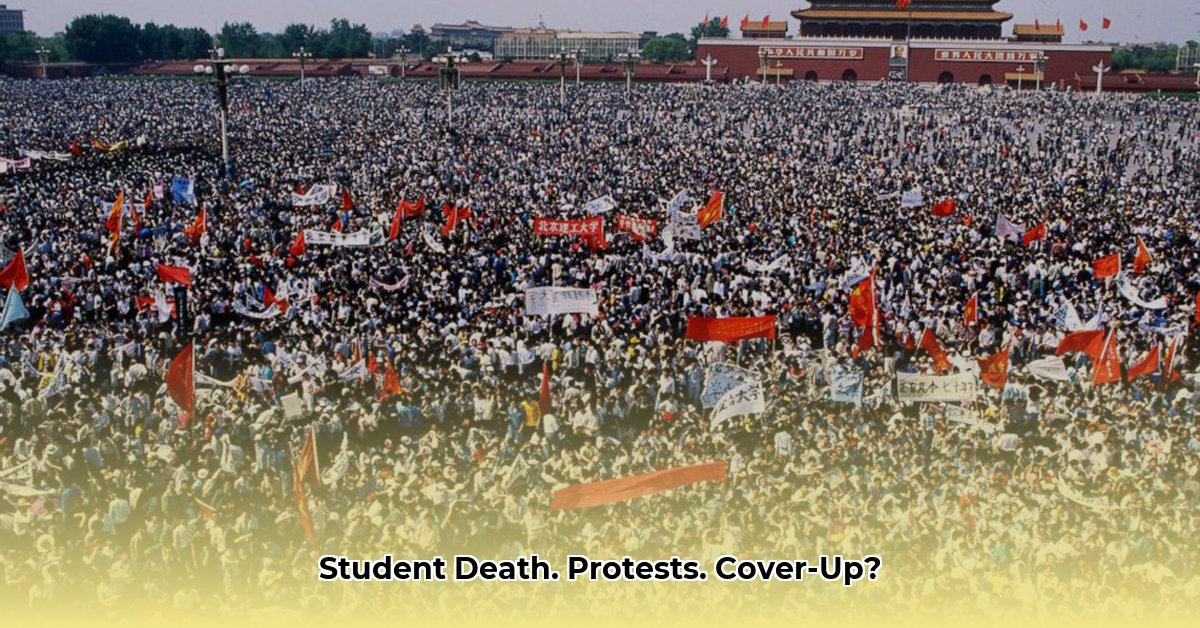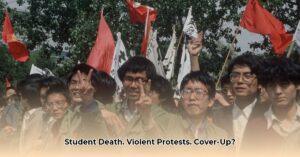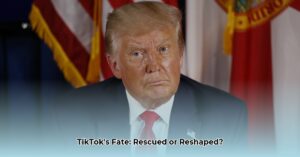The Death of Dang Changxin and the Ensuing Controversy
On January 2, 2025, 17-year-old Dang Changxin died at the Pucheng Vocational Technical School in Shaanxi province, China. While authorities quickly declared his death an accidental fall following a disagreement with another student, this explanation has been met with widespread skepticism and fueled allegations of a government cover-up. Social media platforms, though heavily censored, became a battleground of conflicting narratives, with many users suggesting foul play, bullying, or even suicide as possible factors. This discrepancy between the official narrative and online speculation ignited widespread protests in Pucheng, transforming grief into outrage and demands for transparency.
Evidence Fueling Cover-Up Allegations
Several factors contribute to the public’s distrust of the official narrative. Eyewitnesses reported seeing a bruise on Dang’s neck, raising suspicions of a possible struggle. Furthermore, Dang’s parents were reportedly restricted from thoroughly examining their son’s body, leading to concerns about potential evidence concealment. Rumors of deleted photos from Dang’s phone also circulate online, adding to the suspicion of a concerted effort to obscure the truth. The speed at which authorities concluded their investigation and the lack of detailed information released further fueled the perception of a rushed and potentially incomplete inquiry.
| Evidence Supporting Cover-Up Allegations | Official Explanation | Public Response |
|---|---|---|
| Restricted access to Dang Changxin’s body | Necessary procedure | Raises suspicions of concealed evidence |
| Bruise on Dang Changxin’s neck | Not officially addressed | Fuels speculation of foul play |
| Alleged deletion of photos from Dang’s phone | Not confirmed | Reinforces belief in a cover-up attempt |
| Swift censorship of online discussions | Maintaining social order | Interpreted as suppressing dissent and hiding the truth |
The Eruption of Protests and the Government’s Response
The protests in Pucheng began as peaceful gatherings outside the school, with mourners demanding answers and accountability. However, these demonstrations quickly escalated into clashes with riot police. Videos, though difficult to verify due to censorship and potential manipulation, emerged on social media, purportedly showing projectiles being thrown and police using force to disperse the crowds. This heavy-handed response seemed to confirm, in the eyes of many, the government’s desire to suppress dissent and control the narrative. The swift and comprehensive censorship of online discussions related to Dang’s death and the subsequent protests further solidified this perception. Keywords were blocked, social media posts deleted, and any mention of the incident swiftly erased from the Chinese internet. This reaction mirrored the government’s response to the 2022 “White Paper” protests, suggesting a pattern of silencing dissent rather than addressing public concerns.
International Scrutiny and Long-Term Implications
The incident in Pucheng has not gone unnoticed by the international community. Human rights organizations have expressed concern over the alleged cover-up and the use of force against protesters. Calls for a transparent and independent investigation are growing, with many questioning the Chinese government’s commitment to accountability. This event also raises broader questions about freedom of speech and the right to protest in China, adding to the existing scrutiny surrounding human rights issues within the country. The long-term implications of this incident are still unfolding, but it may significantly impact public trust in the government and could potentially influence future protests and calls for reform.
The Search for Truth Continues
As of January 11-12, 2025, the situation in Pucheng remains tense. Information is tightly controlled, and accessing unbiased accounts is challenging. While the evidence suggests a possible cover-up, definitive proof remains elusive. It is crucial to approach this evolving situation with caution, recognizing the limitations of our current knowledge and the potential for misinformation. Continued scrutiny, independent reporting, and pressure from international bodies may be necessary to uncover the full truth behind Dang Changxin’s tragic death and the subsequent events in Pucheng.
This incident serves as a stark reminder of the challenges in pursuing truth and transparency in an environment where information is tightly controlled. It also highlights the power of social media, even in the face of censorship, to amplify dissenting voices and challenge official narratives. The story of Dang Changxin is far from over, and the world is watching to see how the Chinese government will ultimately respond to the growing demands for justice and accountability.







